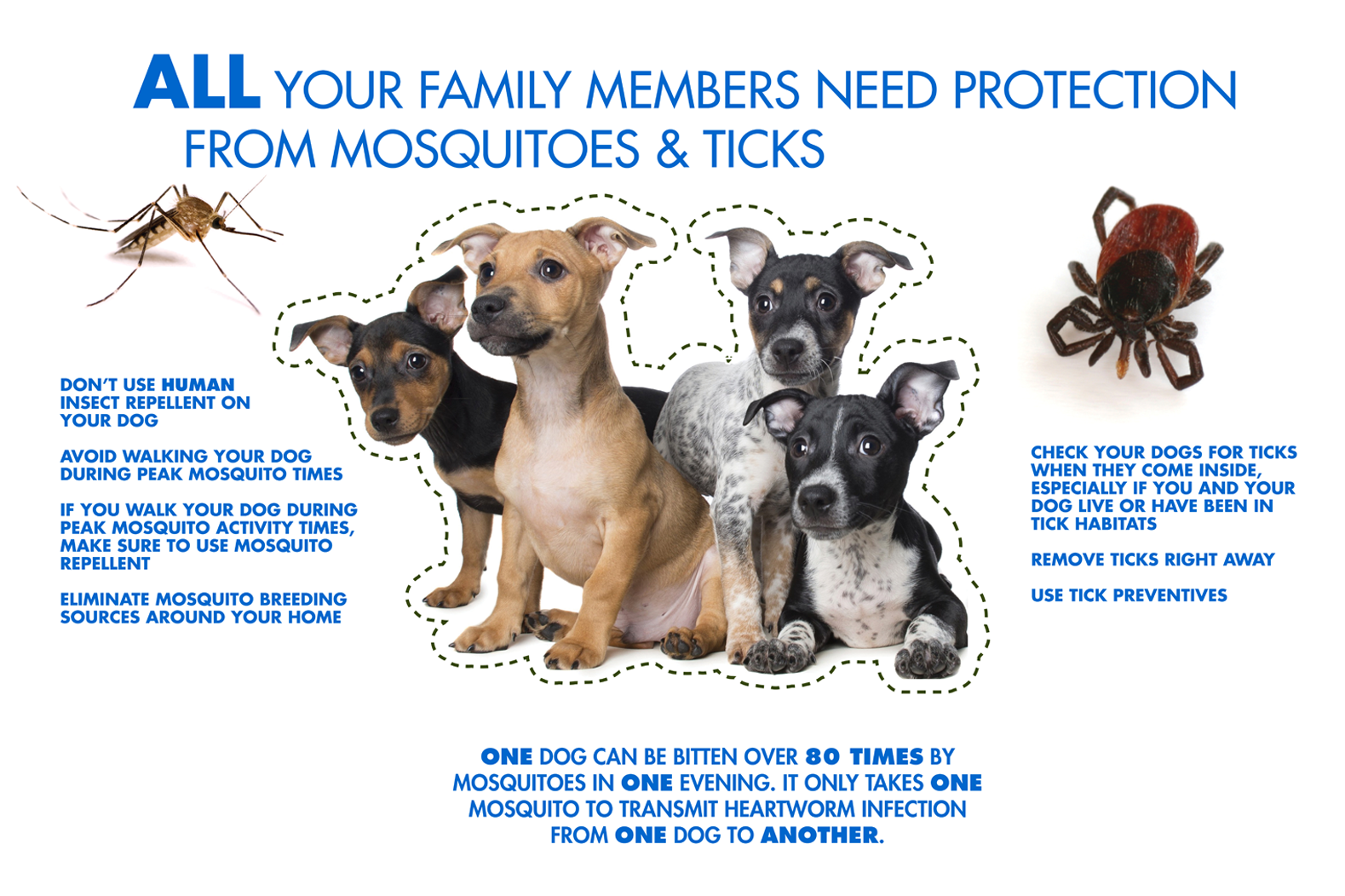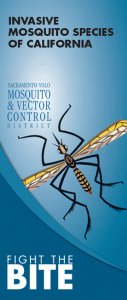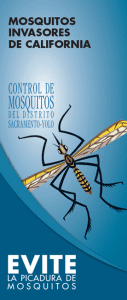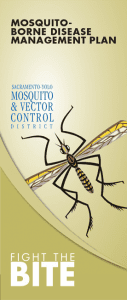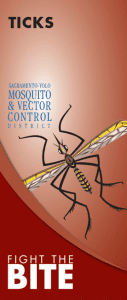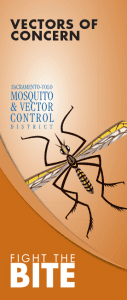Laboratory and Surveillance
Mosquito surveillance is an essential component of an Integrated Pest Management Program (IPM) and is routinely conducted by the District. There are multiple arms of our surveillance program including mosquito abundance, disease activity, and pesticide resistance. Our surveillance program enables specific and effective control of nuisance and disease-spreading mosquitoes, determination of human risk of exposure to mosquito-borne diseases, and evaluation of mosquito control activities.

MOSQUITO SURVEILLANCE
Mosquito abundance is monitored year-round at permanent sites spread throughout Sacramento and Yolo Counties. In addition to abundance, mosquitoes are also trapped and tested for West Nile virus (WNV), St. Louis encephalitis virus (SLEV), and western equine encephalitis virus (WEEV). Routine encephalitis virus surveillance (EVS) is performed May through October. Mosquitoes are trapped throughout Sacramento and Yolo Counties then sorted by location, species, and sex. Female Culex mosquitoes are separated into batches of up to 50 mosquitoes per pool. Generally, only female Culex pipiens and Culex tarsalis are tested as these are the most important encephalitis vectors in our area. Testing is conducted on a weekly basis and detection of positive pools leads to enhanced trapping and control efforts.
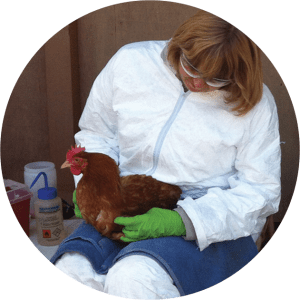
SENTINEL CHICKENS
Sentinel chickens are another surveillance tool used to detect WNV, SLEV, and WEEV. Flocks are strategically placed at unique locations within Sacramento and Yolo counties and are used to monitor and track virus activity. When a chicken is bitten by an infected mosquito its body mounts an immune response and develops specific antibodies to the infecting virus. Blood samples are collected from sentinel chickens every-other week during the mosquito season (May through October) and tested for antibodies against WNV, SLEV, and WEEV. Chickens are ideal sentinels as they do not become ill or die when infected and are considered dead-end hosts for the viruses of concern (they cannot spread viruses).
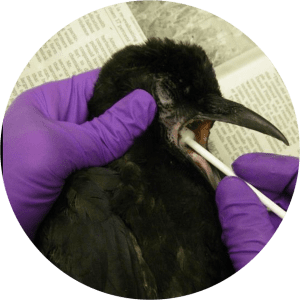
DEAD BIRD SURVEILLANCE
West Nile virus is maintained in a mosquito – bird transmission cycle, songbirds are important hosts for the virus and some species such as American Crows can become very ill and die following infection. Bird die-offs have been an important indicator of WNV activity in the United States. The California Department of Public Health (CDPH) coordinates a WNV dead bird surveillance program that our District participates in from mid-April through mid-October. When a member of the public reports a dead bird to the CDPH website, the District is notified, the bird is collected, and tested for WNV. All residents who report a dead bird that tests positive for WNV are notified by phone and our encouraged to vigilantly avoid mosquito bites and potential exposure to WNV.
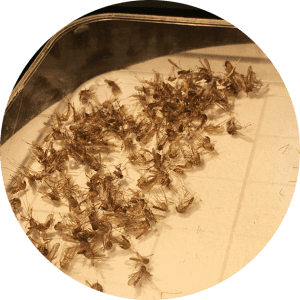
SURVEILLANCE FOR OTHER MOSQUITO-BORNE DISEASES
In addition to the WNV, WEEV, and SLEV the District also performs surveillance or emerging or re-emerging mosquito-borne diseases. A potential re-emerging pathogen is Malaria, an infectious disease caused by a parasite that is transmitted to people primarily by Anopheline mosquitoes. Although Malaria historically was transmitted locally in the Sacramento Valley it has since been eradicated throughout the United States. In Sacramento and Yolo counties, there are two species of mosquitoes that can transmit the malaria parasite: Anopheles freeborni (the Western Malaria Mosquito) and Anopheles punctipennis (the Woodland Malaria Mosquito). We receive malaria case reports from the Sacramento County and Yolo County Health and Human Services Departments. These cases are routinely from people who have traveled to malaria endemic areas in the world. Our laboratory responds to the reports by trapping mosquitoes in the area surrounding the malaria case. Collected mosquitoes are returned to the laboratory for identification, and all female Anopheline mosquitoes are tested for malaria parasites.
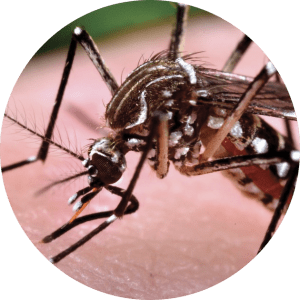
Dengue, Chikungunya, and Zika viruses are also important diseases carried by mosquitoes. These viruses are generally transmitted by Aedes aegypti and Aedes albopictus, two invasive mosquito species that are not currently found in our counties, but have been steadily expanding their range in California. Every year our District receives reports of human cases of these viruses, generally from people who have traveled abroad. Because it is possible for an infected traveller to bring the virus home with them and to infect local mosquitoes, we respond to these reports by setting traps and collecting mosquitoes adjacent to the traveller’s residence and testing all suitable mosquito species for the viruses of concern.
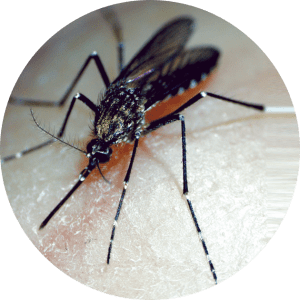
Dog heartworm is caused by the filarial nematode Dirofilaria immitis. In this region the primary vector is a tree-hole breeding mosquito, Aedes sierrensis. Field technicians inspect and treat all known breeding sources for this species, but because of where they breed finding and accessing all sources is not feasible. Aedes sierrensis prefers to feed on mammals and will readily bite humans and dogs. Our laboratory conducts surveillance for adult tree-hole mosquitoes during routine trapping, but mosquitoes are not tested for Dirofilaria immitis. To better monitor the incidence of heartworm disease, the District collaborates with local veterinary clinics to compile reports of infected dogs that live in Sacramento and Yolo counties. Clinics are able to report dog heartworm cases online here. Cases are compiled and mapped with Aedes sierrensis abundance in order to demonstrate the risk of heartworm transmission in our area.

PESTICIDE RESISTANCE MANAGEMENT
Pesticide resistance is of great concern in control programs. Pesticide resistance may occur when mosquitoes are routinely exposed to compounds with the same mode of action. Product rotation is a key element in avoiding resistance, as once mosquitoes develop resistance previously effective treatments no longer control mosquitoes. Increasing resistance is especially a problem for adult mosquito control as there are limited active ingredients available for this purpose. Thus our District continually monitors resistance levels in both adult and larval mosquitoes and carefully develops control strategies with resistance in mind.

TICKS AND LYME DISEASE
Lyme disease is an infectious disease caused by a spirochete bacterium named Borrelia burgdorferi. In our area Lyme disease is transmitted by the western black-legged tick (Ixodes pacificus), humans are exposed when they are bitten by an infected tick. The best way to avoid Lyme disease is to prevent tick bites. Each year during the months when ticks are actively host-seeking (November through May) the laboratory collects tick specimens from suitable field locations using a technique called tick flagging. This is conducted by dragging a one meter long by one meter wide white flannel flag along the side of a trail, host-seeking ticks will grasp the flag as it passes over and attached ticks can be removed and collected. All ticks collected are identified to species, sexed, and suitable vectors are tested for Borrelia burgdorferi.
heartworm surveillance
Our Heartworm Program consists of communicating with veterinary clinics and hospitals in Sacramento and Yolo Counties about heartworm tests preformed and positive cases found each month. Positive cases are matched to their addresses and that information in conjunction with treehole mosquito locations help determine the areas of higher risk for heartworm transmission.
For more information on our heartworm surveillance program, please visit the heartworm reporting page here or contact us by email.


